Methamphetamine’s rising toll in Cook County;
a grandmother laments her mortgage-broker grandson’s overdose death
The number of fatal overdoses tied to meth rose from about 40 in 2019 to more than twice that number each of the next three years. And Mexican cartels are “flooding” the United States with meth, authorities say.
By Frank Main and Tom Schuba
Feb 24, 2023, 5:45am CST
He was a 41-year-old, college-educated mortgage broker.
But his station in life didn’t prevent the man, who lived in a Rogers Park condo, from becoming a regular user of methamphetamine, a stimulant that causes euphoria but also dental problems, memory loss and worse.
The man used to call his grandmother in Tennessee, where he grew up, nearly every day.
“He told me he used methamphetamine,” says the grandmother, speaking on the condition that neither she nor he be named. “He really did make fantastic money, but he was extremely depressed when people stopped buying houses, and he stopped making money last year.
“He said it made him feel real good,” she says of his meth use. “But, after he would come off of that, he would be extremely ill. His stomach was upset, and his teeth were messed up. And there was one episode when he lost the use of his leg completely and was in the hospital for several months.”
On May 20, 2022, her worst fears came true. Her grandson died alone of what the Cook County medical examiner’s office found was a methamphetamine overdose.
“I had worried myself to death because he did it for so long,” she says. “Now, he’s gone. I wish they could completely eradicate the stuff.”
The number of fatal overdoses related to meth rose in Cook County during the COVID-19 pandemic. There were 47 deaths in 2019 and more than twice that number in 2021, according to the medical examiner’s office.
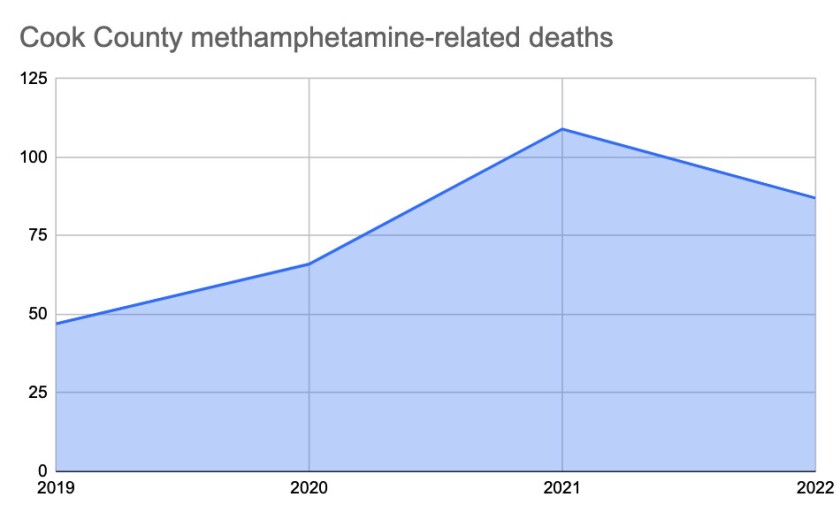
Frank Main / Sun-Times
Also, the U.S. Drug Enforcement Administration has reported a bump in seizures of the illicit drug in the Chicago area as well as Wisconsin and Indiana.
And the Cook County state’s attorney’s office has been prosecuting more cases involving meth in recent years.
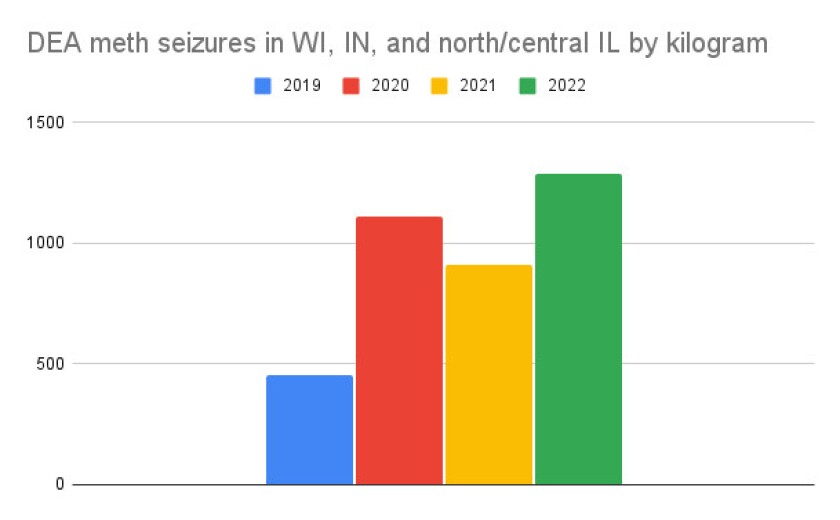
Frank Main / Sun-Times
Some experts say that an ongoing — and mysterious — shortage of legal drugs like Adderall that are used to treat attention deficit hyperactivity disorder might be helping to fuel a meth boom. They say the circumstances are similar to when the supply of legal opioids was tightened more than a decade ago in response to “pill mills” that filled questionable prescriptions. Some of those prescription opioid users then turned to the illicit market, which led to a huge rise in heroin- and fentanyl-related deaths.
“To me, methamphetamine is now beginning to sound a lot like how fentanyl was,” says Taylor Wood, a drug-testing technician for the Chicago Recovery Alliance who examines drugs taken from the streets. “I imagine we’re going to see more and more methamphetamine.”
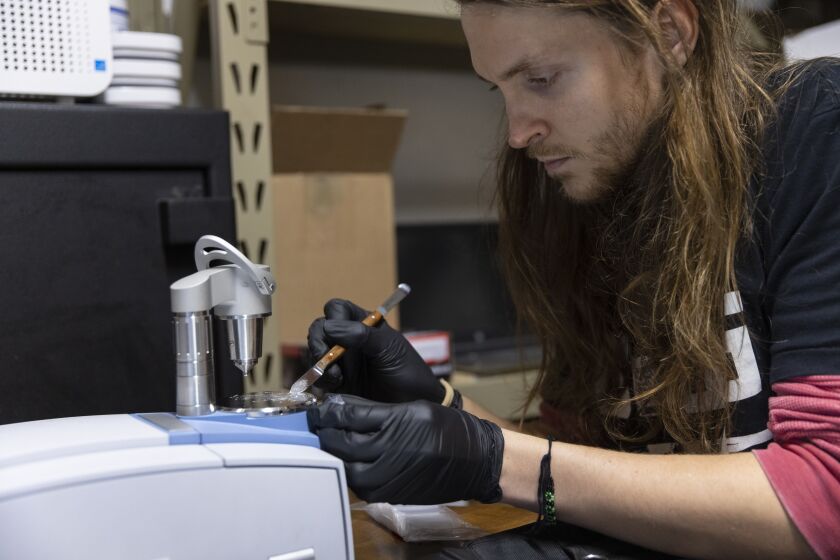
Taylor Wood examines a test sample of methamphetamine at the Chicago Recovery Alliance, 3110 W. Taylor St. on the Near West Side.
Anthony Vazquez / Sun-Times
Wood says “a lot of people” have started using meth as an alternative to harder-to-get Adderall, and he has “numerous friends” who take it.
One of the big problems with meth, though, is that the drug is often being sold mixed with fentanyl, the powerful, lethal opioid that’s also commonly added to heroin with devastating results.
“In some instances, fentanyl finds its way into the methamphetamine supply because those distributors are probably catering to people who use fentanyl but are also trying to switch over to meth,” Wood says.
Many of the meth-related deaths in Cook County in recent years have involved “cocktails” of drugs including meth, fentanyl, cocaine and other substances. Last year, 76 of the 86 deaths attributed to methamphetamine overdoses involved the use of meth in combination with other substances, according to the medical examiner.
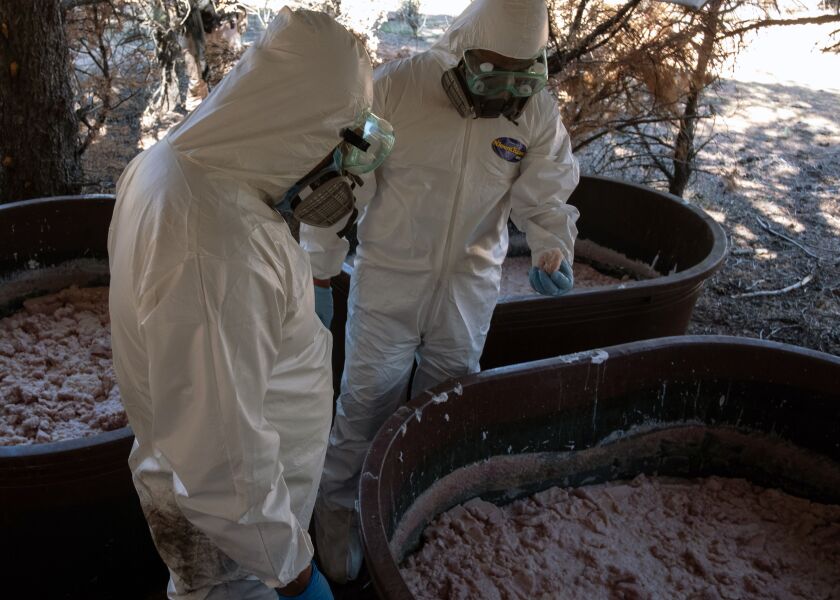
Mexican Army experts examining containers of crystal methamphetamine paste at a clandestine lab in Baja California that was producing the drug.
Getty Images
Mexican cartels are supplying the rise of methamphetamine use.
In the past, it often was manufactured in rural areas using over-the-counter drugs stolen from retail stores, then cooked in home-grown labs.
In 2006, the Illinois Legislature passed harsher penalties for convictions for meth production, and police began busting those labs by the hundreds.
Since then, the Mexican cartels have taken over most of the production of meth that winds up in the Chicago area, officials say. They say the cartels, using “precursor” chemicals that come from China, have built giant, sophisticated labs that make higher-quality methamphetamine than the impure stuff made by U.S. home cookers.
RELATEDBusted in Chicago suburbs, top aide to cartel boss ‘El Mencho’ wanted grenade launchers: prosecutors
The cartels are expanding their sales of synthetic drugs like meth and fentanyl because crop-based drugs are easier for governments to destroy and dependent on the weather.
The Mexico-to-Chicago meth pipeline was highlighted in a recent DEA case.
Sheldon “Shock” Morales, a reputed Gangster Disciples member and convicted drug dealer, and his partner Eduardo Santana were accused of conspiring with a supplier in Mexico and two inmates in a prison in Texas to traffic methamphetamine, fentanyl and cocaine from Mexico to Evanston and Morton Grove in 2019.
RELATEDChinese immigrant in money-laundering ring: Didn’t know $24 million I picked up was from cartels
The drugs were sent in packages from California and Arizona and later sold on streets in the Chicago area, according to the DEA. In wiretapped conversations, Morales referred to the meth as “ice cream,” authorities said.
According to the DEA, about 12 pounds of methamphetamine and close to two pounds of fentanyl were delivered to his Evanston home in a United Parcel Service package on March 1, 2019.
Last year, a jury convicted Morales and Santana of drug-trafficking charges. They’re awaiting sentencing.

Nick Roti, director of Chicago High Intensity Drug Trafficking Area.
Brian Rich / Sun-Times file
Nick Roti, a former chief of organized crime for the Chicago Police Department who now heads a federal anti-drug program known as HIDTA, which targets “high-intensity drug-trafficking areas,” says one of his biggest concerns about meth is that it’s being put into pills and sold illegally as counterfeit Adderall or ecstasy.
RELATEDCocaine seizures soar in Chicago, surrounding states, as DEA ‘snow’ forecast comes true
Last year, the DEA seized 60,947 pills containing methamphetamine in its field division that includes north and central Illinois, Wisconsin and Indiana — up from 9,960 pills in 2021.
“So some kid thinks he’s taking Adderall, and it’s really meth,” Roti says. “That’s probably a pretty big contributor to the amount of overdose deaths.”
In a statement, the DEA said, “As drug traffickers continue to drive addiction by pressing deadly, illicit drugs such as methamphetamine and fentanyl into pill form, we remind the public that the only safe pill to take is that which has been prescribed by a licensed doctor and dispensed from a registered pharmacy.”
How to tell genuine Adderall
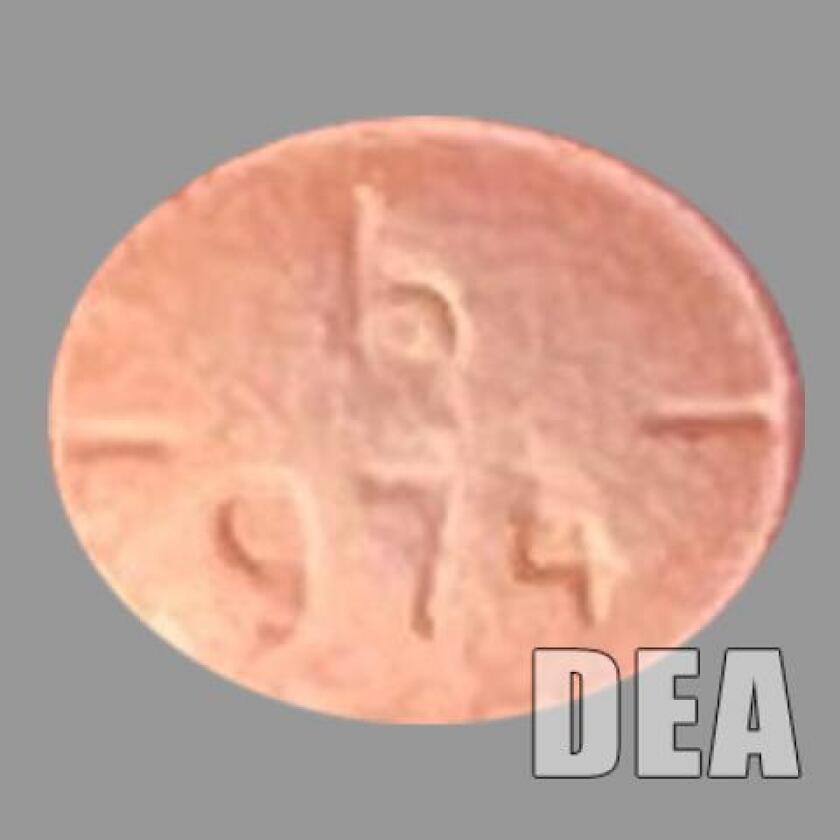

A genuine Adderall pill (left) and a counterfeit pill.
Roti says “the United States is being flooded with meth, following the same exact pattern that we see with opioids from the Mexican-based cartels.” But he says meth use in Chicago hasn’t reached the crisis levels that fentanyl and heroin have.
“We’re not seeing it a lot when they do these street level investigations,” Roti says. “Meth is kind of encroaching into the cocaine market somewhat. But, in the Chicago area, I don’t see a lot more usage just yet.”
A lot of the methamphetamine seized by federal authorities in the Chicago area could be destined for other regions, officials say.
RELATEDDeadly counterfeit pills containing fentanyl now ‘everywhere’ in Chicago, DEA says
Still, Leo Beletsky, a professor of law and health sciences at Northeastern University in Boston, says the ongoing Adderall shortage is likely to lead more people to turn to alternative stimulants like meth, similar to what happened when the opioid crisis began more than a decade ago.

Leo Beletsky, a professor at Northeastern University.
Provided
The U.S. Food and Drug Administration issued an advisory in October announcing that Adderall had fallen into short supply months after pharmacies reported issues filling prescriptions. Teva, a major producer, was “experiencing ongoing intermittent manufacturing delays,” the agency said.
Teva’s name-brand Adderall formulations are now “available,” according to the FDA, but there’s a “limited supply” of some generic versions.
There’s also a shortage of nearly 40 versions of methylphenidate, another popular stimulant used to treat attention deficit hyperactivity disorder, according to the American Society of Health-System Pharmacists.
The easiest way to eliminate the shortage of prescription stimulants is for the government to lift importation restrictions temporarily and work with companies to ramp up U.S. production, Beletsky says.
But the government has said it won’t increase production quotas for Adderall because most manufacturers say they have sufficient inventory “to meet their contracted production quantities for legitimate patient medical needs.”
“It doesn’t seem like there’s a sense of urgency with this,” Beletsky says. “It seems like we really haven’t learned our lesson from the opioid story.”
THE WATCHDOGS
Benedictine order admits keeping cleric at Marmion Academy for years after child sex abuse accusations
You mean like.....secure the border and increase funding and equipment for border security.
ReplyDeleteMexico is here already! Officers I work with have the same last names as criminals then they wonder why search warrants turn up nothing.
ReplyDelete